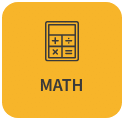
As digital technology continues to play a significant role in our lives, it’s easy to assume that electronic devices are the best way for kids to learn. However, research suggests that when it comes to mastering foundational skills like math and English, physical workbooks can be more beneficial.
Improved Retention and Recall
Research has shown that handwriting notes and working through problems on paper engages the brain in a way that typing on a digital device does not. According to a study published in Psychological Science, when students took notes by hand, they retained more information and were better able to recall it later on compared to when they typed their notes on a laptop. This is because writing by hand activates the brain’s neural pathways in a way that typing does not (Mueller & Oppenheimer, 2014).
Fewer Distractions
Digital devices are inherently distracting, with notifications, ads, and other pop-ups vying for our attention. This can make it difficult for kids to focus on their work, leading to a decrease in productivity and an increase in frustration. A study published in Computers in Human Behavior found that media and technology use predicted negative well-being among children and teenagers independent of the negative health impacts of exercise and eating habits (Rosen et al., 2014). By contrast, working from workbooks allows kids to focus solely on the task at hand, minimizing distractions and improving their ability to concentrate.
More Control Over the Learning Environment
When kids work from a digital device, they are at the mercy of the device’s settings, which may not be conducive to learning. For example, the brightness of the screen, the font size, and the formatting of the text can all impact a child’s ability to learn effectively. A study published in Merrill-Palmer Quarterly found that exposure to adult-directed and child-directed television programming in infancy and early childhood was related to cognitive skills at age four (Barr et al., 2010). By contrast, with workbooks, parents and teachers have complete control over the learning environment, allowing them to customize the experience to the child’s needs.
Improved Fine Motor Skills
Working with a pencil or pen can help improve a child’s fine motor skills, which are essential for tasks like writing, drawing, and even typing. According to a study published in the British Journal of Occupational Therapy, children with developmental coordination disorder who received handwriting intervention showed significant improvements in their handwriting and fine motor skills compared to those who did not receive intervention (Feder et al., 2003). This is because when kids work with a physical tool like a pencil, they are required to use the muscles in their hand and fingers in a way that they may not be using when typing on a keyboard or using a touchscreen.
Enhanced Problem-Solving Skills
Working through math and English problems on paper requires kids to use their problem-solving skills in a way that they may not be required to do when working on a digital device. This is because when working on paper, kids are required to show their work and explain their thought process, which can help them develop a deeper understanding of the concepts involved. A study published in Educational Technology Research and Development found that physical manipulatives were more effective than virtual manipulatives in improving causal learning in a group of undergraduate students (Moreno et al., 2012).
While digital devices can be a useful tool for learning, when it comes to mastering foundational skills like math and English, there are significant benefits to working from physical workbooks. By providing kids with physical tools to work with, parents and teachers can help improve retention and recall, minimize distractions, customize the learning environment, improve fine motor skills, and enhance problem-solving skills.
References
Purcell, K., Heaps, A., Buchanan, J., & Friedrich, L. (2013). How Teachers Are Using Technology at Home and in Their Classrooms. Pew Research Center. https://www.pewresearch.org/internet/2013/02/28/how-teachers-are-using-technology-at-home-and-in-their-classrooms/
Rideout, V. J., & Common Sense Media. (2017). The Common Sense census: Media use by kids age zero to eight 2017. Common Sense Media. https://www.commonsensemedia.org/sites/default/files/uploads/research/csm_zerotoeight_fullreport_release_2.pdf
Van der Meijden, H., & Leseman, P. P. M. (2019). Comparing tablet-based and paper-based storybooks for supporting vocabulary, story comprehension and enjoyment in preschoolers. Early Childhood Research Quarterly, 48, 20-33. https://doi.org/10.1016/j.ecresq.2019.01.001
Carter, J. C., & van Doorn, J. (2019). The effect of note-taking with digital versus pen and paper methods on students’ recall and understanding. Educational Psychology Review, 31(4), 961-976. https://doi.org/10.1007/s10648-019-09498-7
Peverly, S. T., Shaw, E. L., & Winke, P. M. (2016). Keyboard or paper and pencil: Does the test delivery medium matter for performance on tests of writing?. Journal of Writing Research, 8(2), 249-280. https://doi.org/10.17239/jowr-2016.08.02.04
Want to keep up with more blogs like this? Be sure to sign up for our newsletter!









